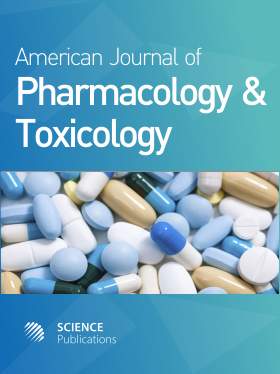α-Lipoic Acid Therapy Modulates Serum Levels of Some Trace Elements and Antioxidants in Type 2 Diabetic Patients
- 1 Al-Azhar University, Egypt
- 2 National Research Center, Egypt
- 3 El-Tawfik Military Clinics, Egypt
Abstract
Problem statement: The metabolism of several trace elements has been reported to alter in diabetes mellitus. The disturbance of their serum levels may have a role in the pathogenesis and progress of this disease. In addition, the reports about the status of antioxidants and antioxidant enzymes in diabetic patients are very contradictory. Though α-Lipoic Acid (LA) has long been touted as antioxidant, it has also been shown to improve glucose handling. Approach: The present study aimed to investigate the effect of exogenous supplementation of LA (600mg day−1) on the serum levels of some antioxidants (Superoxide Dismutase (SOD), Glutathione (GSH) and vitamin C) and trace elements (Zn, Se, Cu and Co) in type 2 diabetic patients. The aim of this study was also extended to study the association of these parameters with the glycemic status. The studied participants were categorized into 3 groups (15 each): Control group: Non diabetic healthy volunteers. Diabetic group: Type 2 diabetic patients. Lipoic acid treated group: Type 2 diabetic patients received α-lipoic acid for 2 months in a daily oral dose of 600 mg. All participants were subjected to full history taking and complete clinical examination during the experimental period. Fasting serum samples were taken for determination of glucose, insulin, lipid profile and antioxidants as well as some trace elements. Homeostasis Model Assessment (HOMA) was also calculated as a marker of insulin resistance. Results: The results revealed that LA improved insulin resistance present in diabetic patients. The effects of oral treatment with LA were pronounced by improvement of serum levels of antioxidants (SOD and GSH, p<0.001, while vitamin C, p<0.02), Zn and Se (amounted 24.17 and 23.24%, respectively), compared to diabetic group. Oral treatment with LA produced strong positive correlations between serum levels of fasting glucose and both SOD and Se (r = 0.8). In addition, LA converted the negative correlation between SOD and HOMA index in diabetic patients into strong positive correlation. Conclusion: This study suggests that oral administration of LA (600mg day−1) for 2 months to type 2 diabetic patients alleviated the insulin resistance, oxidative stress and lipid profile abnormalities. In addition, LA returned the serum levels of Zn and Se to the normal values.
DOI: https://doi.org/10.3844/ajptsp.2010.152.158

- 4,432 Views
- 3,928 Downloads
- 7 Citations
Download
Keywords
- α-Lipoic acid
- trace elements
- superoxide dismutase
- glutathione
- Diabetes Mellitus (DM) and Homeostasis Model Assessment (HOMA)
